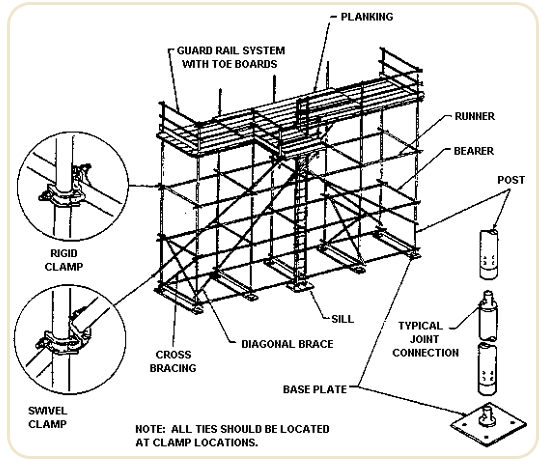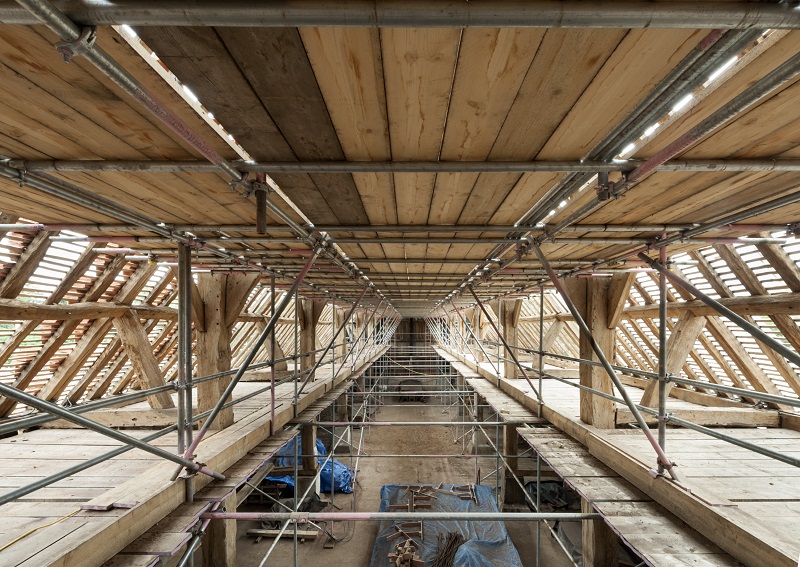High-Quality Residential Scaffolding for Seamless Home Renovations in Surrey
High-Quality Residential Scaffolding for Seamless Home Renovations in Surrey
Blog Article
Discovering the Various Kinds Of Scaffolding Made Use Of in Building Projects
The building sector counts greatly on numerous sorts of scaffolding to meet details project needs, each offering distinct benefits and applications. Typical framework scaffolding gives a sturdy structure for general tasks, while suspended scaffolding is vital for job on high-rise frameworks. Other options, such as system and rolling scaffolding, deal with effectiveness and mobility, specifically. Additionally, the cantilever variant verifies vital in city atmospheres where room is constricted. Recognizing the nuances of these scaffolding kinds is crucial for optimizing security and performance on building and construction websites, motivating a better exam of their special attributes and applications.

Conventional Structure Scaffolding
Traditional framework scaffolding is one of one of the most widely utilized techniques in the building and construction market as a result of its robustness and adaptability. This system consists of horizontal and vertical frameworks that are constructed to produce a stable platform for materials and workers. The main elements include vertical articles, straight journals, and angled braces, which together offer a strong structure that can support substantial loads.
One of the vital benefits of conventional frame scaffolding is its flexibility to different building projects, varying from domestic structures to large industrial structures. The modular design allows for very easy assembly and disassembly, making it reliable for both short-term and lasting jobs. Additionally, the system can be personalized in elevation and width, fitting various building styles and website problems.
Safety and security is vital in scaffolding applications, and traditional framework systems are equipped with guardrails and toe boards to avoid drops and ensure worker security. Routine examinations and adherence to safety policies are vital in keeping the honesty of the scaffold (Scaffolding). In general, standard framework scaffolding continues to be a fundamental choice in the building and construction sector, providing a trustworthy system for labor and boosting overall project efficiency

Suspended Scaffolding
Put on hold scaffolding uses an one-of-a-kind solution for building and construction jobs that require accessibility to raised surfaces, specifically in circumstances where traditional structure scaffolding may be not practical. This sort of scaffolding is usually suspended from the roofing or upper levels of a framework, utilizing a system of sheaves, systems, and ropes to produce a functioning space that can be readjusted to different elevations.
One of the key advantages of put on hold scaffolding is its versatility. It can be conveniently repositioned or decreased to accommodate modifications in construction demands, making it optimal for tasks such as home window installation, frontage work, and upkeep on skyscrapers. In addition, the minimal impact of put on hold scaffolding permits much better use ground room in urban atmospheres, where room is commonly limited.
Safety and security is a crucial consideration in the use of suspended scaffolding. Generally, put on hold scaffolding supplies a reliable and effective option for accessing hard-to-reach locations in click to read different building and construction scenarios, enhancing both productivity and safety and security on site.
System Scaffolding
System scaffolding, typically pertained to as a modern solution in the scaffolding industry, contains pre-engineered parts that can be promptly constructed and adjusted for different construction projects. Scaffolding. This kind of scaffolding is identified by its modular style, which enables versatility and efficiency on work websites, fitting different elevations and architectural needs
Generally made from high-strength steel or light weight aluminum, system scaffolding offers boosted resilience and stability. The parts include vertical blog posts, straight ledgers, and angled dental braces, which interconnect safely, making certain a robust structure. The style commonly integrates standard fittings, streamlining setting up and disassembly procedures, therefore lowering labor time and prices.

Rolling Scaffolding
Rolling scaffolding is a versatile alternative to conventional fixed scaffolding, developed for wheelchair and simplicity of use on building sites. This sort of scaffolding consists of a system sustained by structures with wheels, permitting workers to easily relocate it as required. The flexibility attribute significantly boosts performance, as it decreases downtime connected with dismantling and setting up taken care of scaffolding.
Normally built from lightweight materials such as light weight aluminum or steel, rolling scaffolding uses a durable yet portable service for projects requiring constant repositioning - Scaffolding. It is especially advantageous in jobs such as painting, drywall installment, and electric job, where access to various view website elevations and locations is necessary
Safety is paramount in rolling scaffolding design, with features such as locking wheels to avoid unintentional activity when in usage, and guardrails to protect workers from falls. Furthermore, several models are adjustable in height, fitting various project requirements.
Cantilever Scaffolding

The style of cantilever scaffolding normally entails making use of braces or arms anchored to a building or structure, enabling the platform to prolong outside safely. Safety is critical; hence, these scaffolds have to be crafted to hold up against numerous lots and ecological conditions. Routine assessment and maintenance are vital to guarantee architectural integrity and employee safety.
Cantilever scaffolding is preferred for its convenience and effective usage of room, making it a preferred choice in urban atmospheres where room restrictions prevail. Additionally, it assists in easier accessibility to high altitudes, eventually contributing to the general performance of building and construction jobs. Just like all scaffolding types, proper training and adherence to safety requirements are crucial for workers utilizing cantilever scaffolding.
Conclusion
In final thought, the diverse kinds of scaffolding made use of in building jobs each offer distinctive objectives tailored to certain site needs. Standard framework scaffolding gives stability, while suspended scaffolding provides versatility for elevated jobs. System scaffolding facilitates quick assembly, and rolling scaffolding boosts movement for differing workplace. Cantilever scaffolding efficiently attends to barriers in urban settings. Comprehending these scaffolding kinds is important for enhancing safety and security and productivity in building, eventually adding to the effective completion of projects.
Typical frame scaffolding offers a durable structure for basic jobs, while put on hold scaffolding is essential for work on high-rise frameworks.Moving go scaffolding is a functional choice to traditional fixed scaffolding, designed for mobility and ease of use on construction sites. As with all scaffolding types, proper training and adherence to safety standards are crucial for workers using cantilever scaffolding.
Conventional frame scaffolding provides stability, while suspended scaffolding uses adaptability for raised tasks. System scaffolding assists in fast assembly, and rolling scaffolding improves flexibility for differing work settings.
Report this page